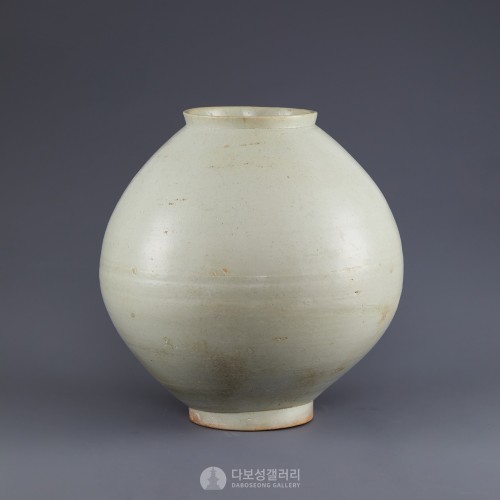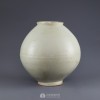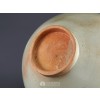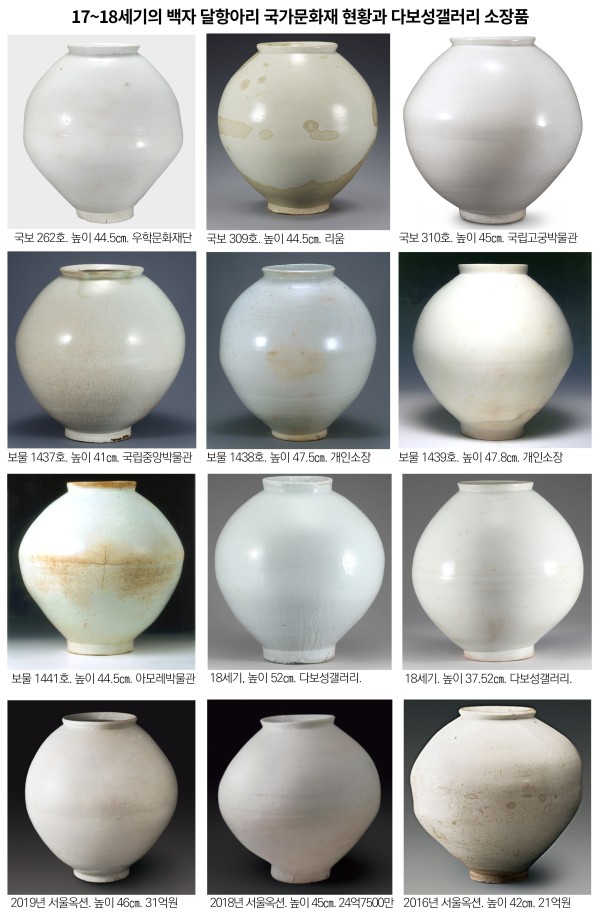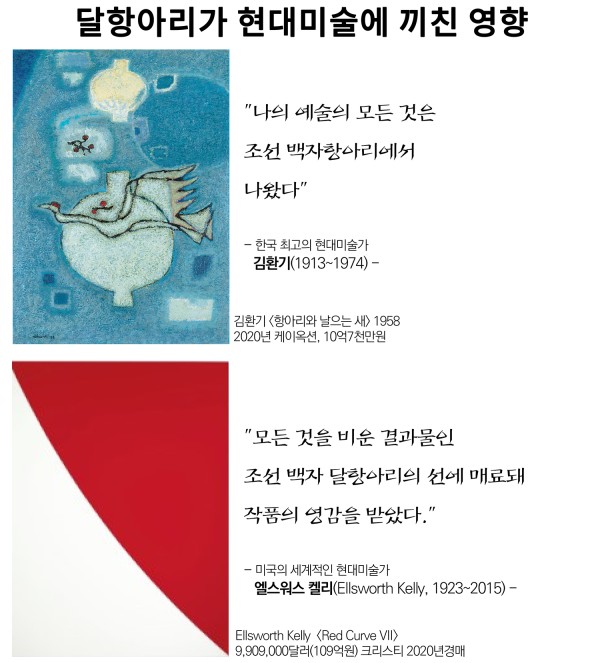본문
조선 후기인 18세기에 만들어진 백자 달 항아리이다.
백자 달 항아리는 조선시대의 대표 도자기인 백자 가운데 무늬가 없는 순백자 항아리로 명칭은 색감과 형태가 보름달을 품은 듯하고, 높이가 40cm 안팎의 대형이라서 붙여졌다고 한다. 달항아리의 가운데에는 불룩한 부분에 아랫부분과 윗부분을 접합한 흔적이 있는데, 크기가 대형인 탓에 만들기 어려워 아래와 위 부분을 따로 만들어 붙여서 완성했기 때문이다. 이 흔적은 인공적이지 않은 자연스러움과 솔직함을 보여주는 대표적인 한국미로 평가된다.
이 백자 달항아리는 구연부의 외반 정도와 수직 굽이 조화되어 풍만하면서 안정적이고, 완전한 균형을 유지하고 있다. 이에 국가지정문화재로 지정된 다른 달 항아리보다 높이 37.5cm 로 크기가 조금 작지만, 그 형태와 색채의 아름다움에서는 결코 뒤지지 않는 탁월한 조형미를 보여준다. 국보로 지정되어도 손색 없을 만큼 한국미를 보여주는 훌륭한 달 항아리이다.
달 항아리는 조선 17세기 후기~18세기 전기 영․정조 시대에 왕실의 음식과 식기를 담당한 기구인 사옹원의 분원, 지금의 경기도 광주 일대의 가마에서 제작된 것으로 보인다. 국영 가마에서 만들어진 왕실 전용 백자인 만큼 그 수량도 매우 적다. 현존하는 백자 항아리는 20여 점에 불과하며, 그 가운데 7점이 국가지정문화재(국보 3점, 보물 4점)로 등록되어 있을 정도로 예술적, 역사적 가치가 매우 높다.
这是朝鲜后期18世纪制作的白瓷壶。
白瓷壶是朝鲜时代的代表性瓷器白瓷,没有任何纹样的纯白瓷壶,是象征韩国美的文化遗产。其名称的色感和形态像满月一样,高约40cm左右,因此得名。
因为白瓷壶中间有凸起部分上下部接合的痕迹,并且体型偏大,很难制作,所以下部和上部单独制作并粘贴完成。这一痕迹被评价为展现非人工的自然和直率的代表性韩国美。
这个白瓷壶与口沿部的外撇程度和直底相协调,丰满、稳定、保持完整的平衡。
因此,虽然只有37.5厘米,比被指定为国家指定文化遗产的其他白瓷壶体积略小,但在形态和色彩的美感方面毫不逊色展现了卓越的造型美。即使被指定为国宝也毫不逊色,是展现韩国美的优秀白瓷壶。
白瓷壶可能是在朝鲜17世纪后期至18世纪前期英、正祖时代负责王室饮食和餐具的机构司饔院的分院,以及现在的京畿道光州一带的窑中制作。因为是在官窑中制作的王室专用白瓷,所以数量也非常少。 现存的白瓷坛子只有20多件,其中7件被登记为国家指定文化遗产(国宝3件、宝物4件),具有很高的艺术和历史价值。
This is a white porcelain moon jar made in the late 18th century in the Joseon Dynasty.
The height of this work is 52cm, which exceeds other moon jars. Its overall shape is also well-balanced, showing the unique beauty of Joseon white porcelain. Recently, one of the Joseon white moon jars whose height was 45.1cm was auctioned for 4.56 million dollars. Therefore, this moon jar which is bigger than that is presumed to be much priceless.
The white porcelain moon jar without any pattern is representative of Korean beauty. Because of its pure color and shape like a full moon, it is called a 'moon jar.' It mostly has a trace in the belly which was made when joining the upper piece and the lower piece. Due to its huge size, it was necessary to make the two parts separately and later glue them. This trace is one of the essences of Korean aesthetics that shows naturalness and purity without any artificial decorations.
The moon jars are thought to be made in the kilns around Gwangju, Gyeonggi-do, and a branch of Sawongwon, an office that took charge of the food and table services for the royal family. Their production was especially active from the late 17th century to the early 18th century, the period of King Yongjo and Jeongjo of the Joseon dynasty. As they were only made in the royal kiln for the palace, their quantity is very small. Only 20 pieces of white porcelain moon jars are remaining now. The fact that the seven pieces among them are national cultural heritages of Korea implies their priceless value in both artistic and historical contexts.
